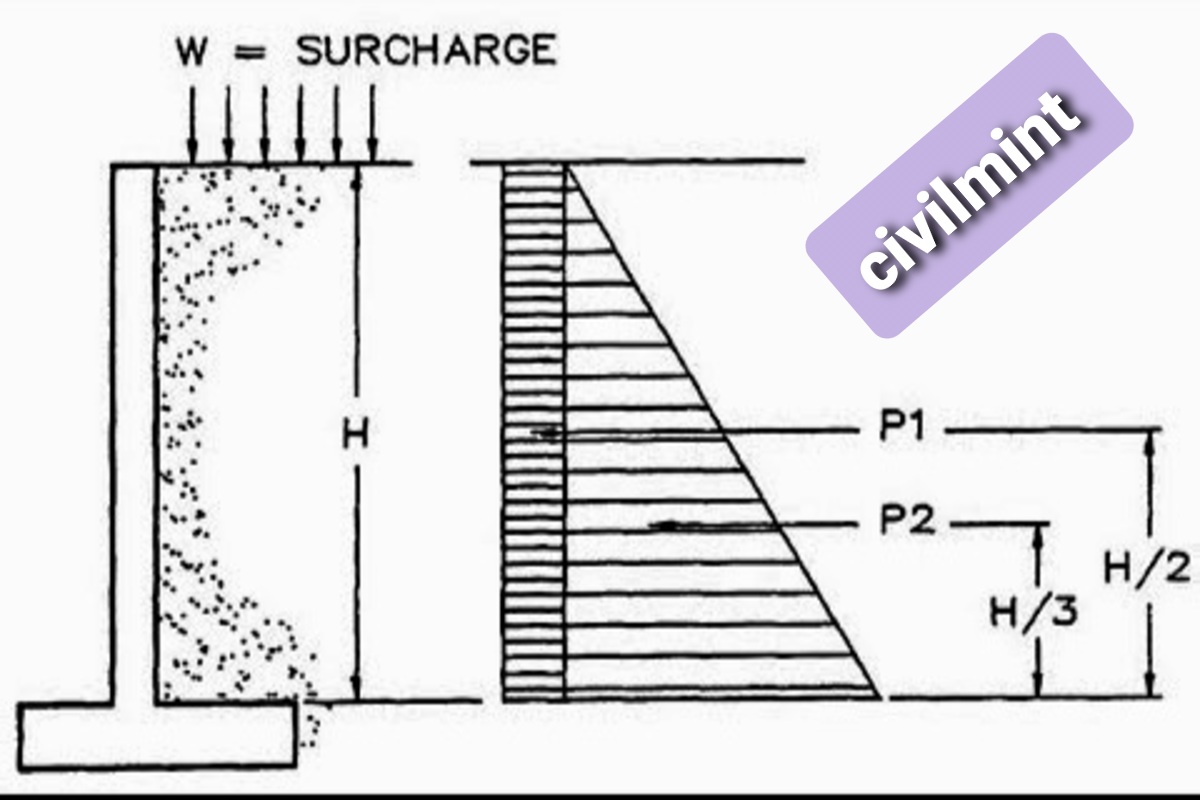Table of Contents
What is Surcharge Load on Retaining Wall?
The surcharge load on a retaining wall refers to the extra load that is placed on the soil surface in addition to the dead weight of the soil.

Overburden loads can come from a variety of sources, such as heavy construction equipment, buildings, or storage materials placed on top of the soil. This additional weight can create an additional force that must be considered when designing a retaining wall.
How To Calculate Surcharge Load On Retaining Wall
To calculate the surcharge load on a retaining wall, one must determine the weight of the material placed on top of the soil. Then, the force exerted on the retaining wall can be calculated using standard formulas.
For example, if a retaining wall is supporting a parking lot, the weight of the parked vehicles must be considered as surcharge load. The weight of the vehicles can be calculated based on their type and size, and the area they occupy.
Effects Of Surcharge Load On Retaining Wall
Surcharge load can significantly impact the structural behavior of a retaining wall. When a retaining wall is subjected to surcharge load, the additional pressure can create stress and cause deformation or failure of the wall. If the surcharge load exceeds the retaining wall’s capacity, the wall can collapse or experience excessive settlement, resulting in costly repairs or even catastrophic consequences.
It is responsibility of a design engineer to consider the surcharge load when designing a retaining wall. Designers and engineers must take into account all potential sources of surcharge load and design the wall to bear the load in a safe way.
Expert’s Advice
Surcharge load on a retaining wall is a critical factor to consider during the design and construction of retaining walls. The weight and pressure of materials placed on top of the soil can create significant stress on the wall, potentially leading to structural failures. By calculating the surcharge load and designing the wall to withstand these forces, engineers and designers can ensure the safety and stability of retaining walls for long period of time.
Faqs
It’s the weight exerted by vehicles or heavy equipment on the adjacent ground surface, which affects the retaining wall’s stability.
A parking lot located adjacent to the wall. The weight of parked cars on the parking lot would exert additional pressure on the wall, potentially increasing the risk of wall failure.
You need to determine the weight and angle of the surcharge, the type of soil, and the height and location of the retaining wall.
Multiply the weight of the surcharge by the appropriate surcharge angle and then apply the result to the retaining wall.
It’s the weight exerted by people, animals, or vehicles moving on the adjacent ground surface, which affects the retaining wall’s stability.
It’s the weight exerted by a concentrated load at a specific point on the adjacent ground surface, which affects the retaining wall’s stability.
A utility pole or a signpost located adjacent to the wall.
Determine the weight and location of the surcharge, the angle of the surcharge, and the properties of the soil and the wall. Then, use mathematical formulas or software programs to calculate the surcharge load.
